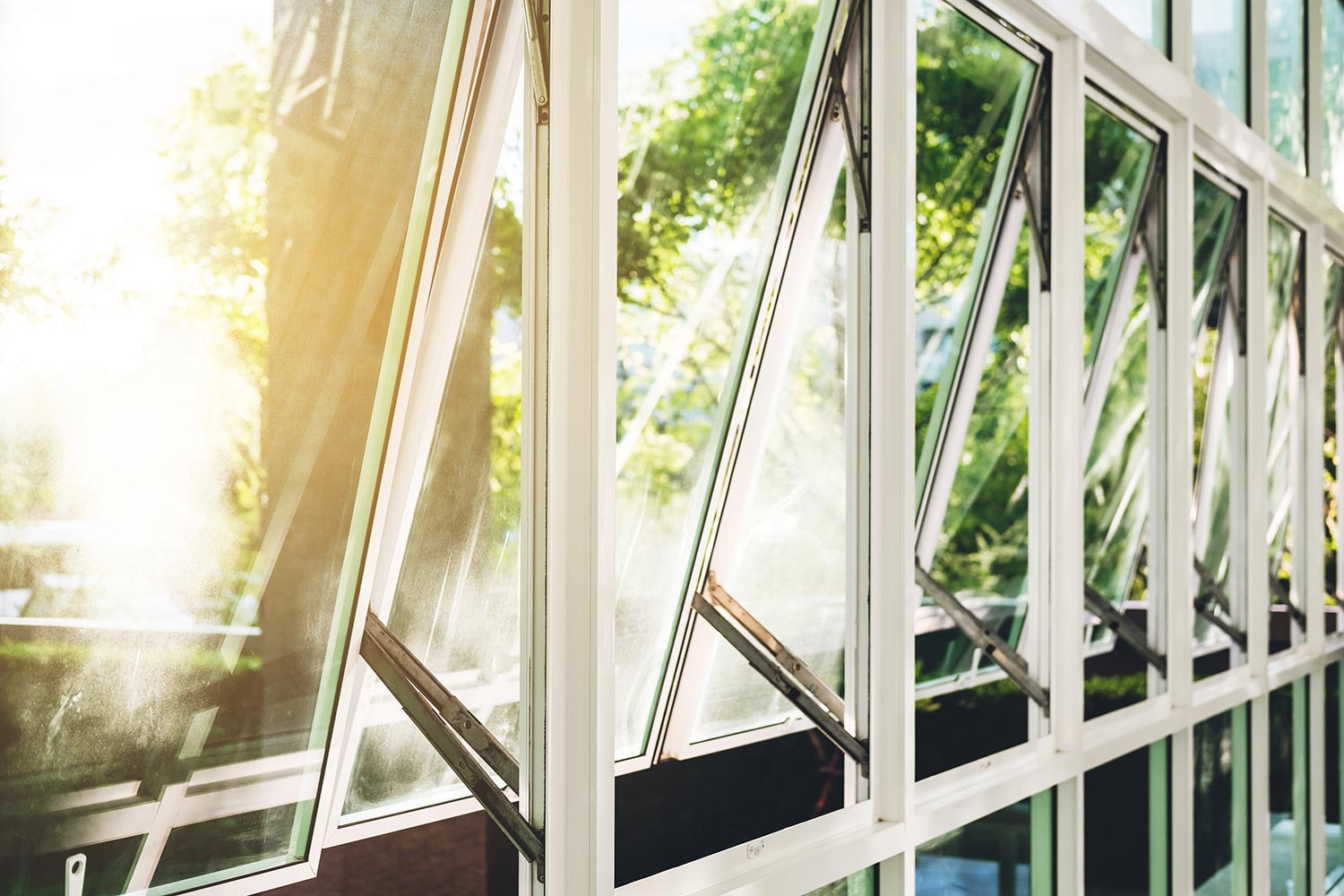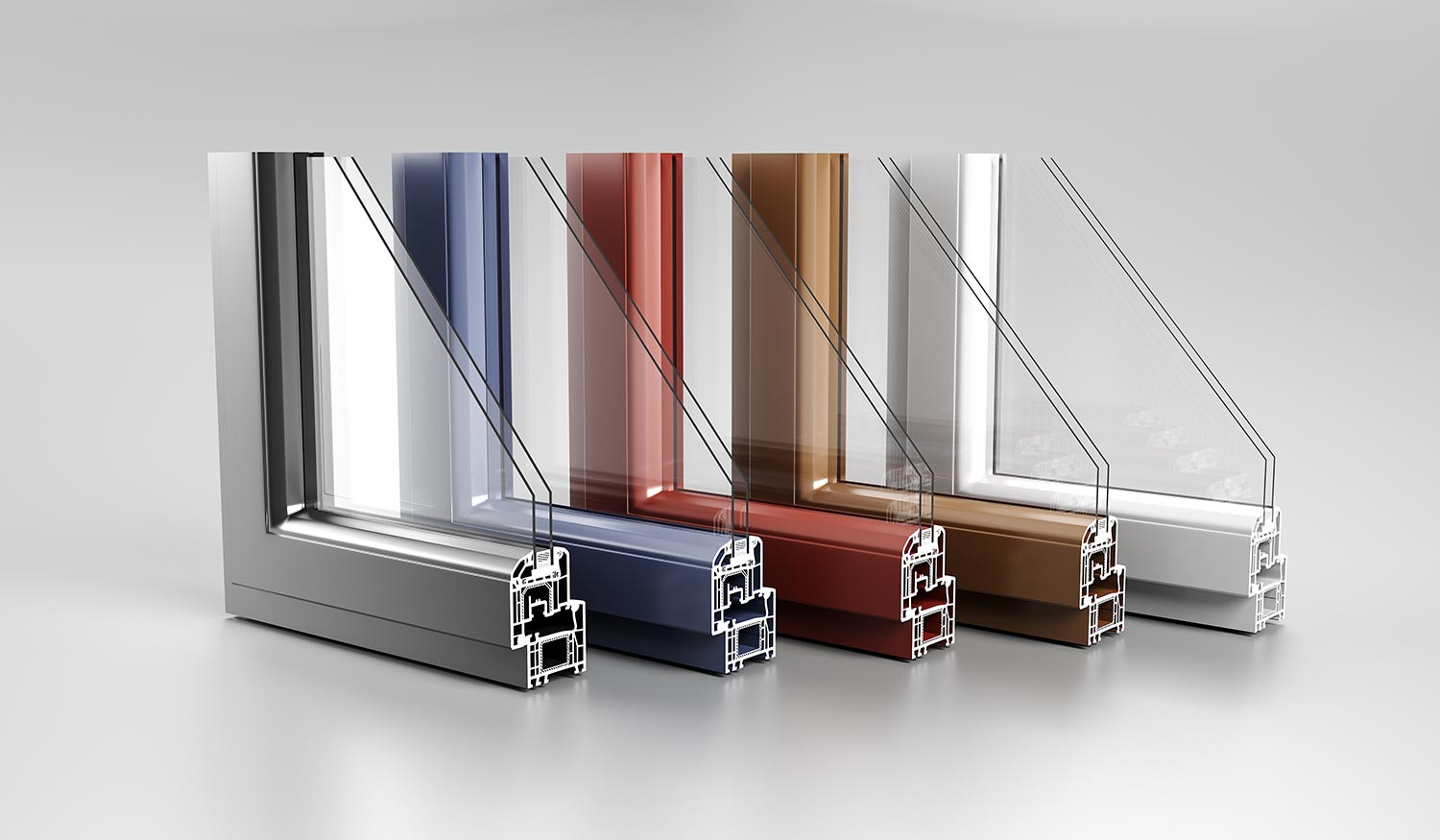If you’re in the market for new windows or you’re building a new home, you might be considering the beauty of casement windows. And if you’re already overwhelmed by the variety of options available in the modern century, don’t despair. We’ve carefully explored the different types of casement windows and their features and listed them here.
Casement window types:
- Hinging: Side, Bottom, Top, or Double-action
- Swing Direction: In or Out
- Locks: Hidden and Visible
- Operation: Crank, Motorized, Slide, or Push
- Insulation: Noise and Sound
- Sash: Double or Single
- Extras: Decorative Sashes, Integrated Blinds, Colors, and Hardware
- National brands include: Pella, Andersen, and Marvin
But which type of casement window will work for you and your project? Keep reading to find detailed information about casement window options. We’ve also included any pros or cons to help you decide exactly what you need.

Casement Windows
Casement windows are quite common and popular in Europe. They are so popular because they look good and are very functional. Their large panes of glass let in unobstructed light, and they are simple to operate. They also let in plenty of fresh air because the entire window opens.
Modern casement windows are better insulated and more secure. There are a variety of colors and hardware available. Cranks, locks, and handles are more secure. Protecting your family, [including the furry members], is easier than ever with the new designs.
Casement windows are a great way to add an elegant and superior finish to any home. There are so many different features of casement windows; you’re sure to find exactly what you need!
We’ll start the list with the different ways casement windows function.
Casement Window Movement
Side-Hinged:
Side-hinged casement windows are hinged on the side, and the sash, [the pane of glass], opens just like a door. They are perfect for replacing a window that slides up and down [called a double-hung window]. You can also use them to have usable windows on either side of a large picture window.
We sometimes add affiliate links and content that was curated and created by our team with the help of advanced ai tools to help showcase the best design styles.

The side-hinged casement windows let in fresh air without ruining the view from the fixed center window.
Top-Hinged:
Also referred to as “Awning Windows,” these windows are popular above a door. They open to provide ventilation but also protect against weather. They can be used to allow ventilation and light in many situations, but they still keep out the elements.

This row of top-hinged casements lets in tons of light and air with maximum protection.
Bottom-Hinged:
Known in the industry as “Hoppers,” these bottom-hinged casement windows are an excellent choice for tiny basement windows. They let in ventilation without compromising security.
These ‘hopper’ windows are great for security, light, and ventilation.
Double-Action Hinged:
The double-action hinge is the best of both worlds. It can function as a bottom-hinge and open on a side-hinge with a quick turn of the latch.
It’s great for homes with small children or pets. Use the bottom hinge option to keep your child or pet securely inside - and your screens protected from your pet’s claws!

This double-action window is perfect for homes with kids or pets.
Swing-Out Casements:
There are two options for casement swing direction; you can choose swing-in or swing-out. A swing-out casement is convenient if you don’t have space for the window to swing inside. It’s also helpful if you have curtains or blinds that would interfere with a swinging pane of glass.

These gauzy curtains are unaffected by the window swinging outward.
Swing-In Casements:
Swing-in casements are the second option. They’re a good idea if you have something to block the outward swing, like a flower box hanging from the window or shutters on the outside.
On the con side, swing-in windows will take up some indoor room. But on the pro side, it’s easy to clean both sides, so they’re a good option for higher stories.

An inward swinging window makes cleaning easy when you’re up high.
Casement Window Operation
Next, we’ll discuss the different ways a casement can be locked, opened, and closed.
Exposed Casement Locks
An exposed lock is simply a lock that has a lever and hook attached to the frame. It is locked with a key to keep it secure.

Hidden Casement Locks
With a hidden lock, the latch keeps the window closed, and a lock mechanism is hidden inside the frame with a flush-mounted handle. When the lock handle is moved from one side to another, the hidden device grabs the window frame and locks it securely into place.
To avoid small children accidentally opening these locks, there is a small safety button to depress before unlocking.
Now let’s look at the options for opening and closing the casement window.
Manual Crank Handle
Many casement windows have a standard, crank-style handle on the inside frame. This type of handle is turned in a circle to open and close the window. The crank is attached to a lever that pushes and pulls the window open and closed. Take a look at the following video to see it in action.
Motorized Crank Handle
Although many crank handles are manually operated, several companies make a motorized version. This is convenient when you have a casement window in a ceiling or a hard-to-reach area. In this video, you’ll see the motorized technology. Some can be operated remotely or with an app on your phone.
Sliding Action Handle
A newer option for opening your casement window is the slide-action feature. Mounted on the side of the frame, it makes opening and closing the window quick and easy. It’s one of the latest styles of handles and has a nice, minimalist look.
Simple push-open operation
The last way to open a casement window is a simple push-open and pull-closed window sash. This type of casement window is as simple to operate as it seems.
Open the latch handle, then push the window open as much as you like. A hydraulic arm is in the frame or hidden in the door to keep the window from slamming shut in a breeze.

Hidden hydraulics secure this skylight casement window in the open position.
Although the casement is a simple window, many modern improvements make it perfect for modern use. We’ll talk about those next.
Casement Window extra features:
Insulation: Sound or Weather
A window was originally designed to keep out the weather and let in the light. But old windows can let in a lot of cold or hot air that affects your comfort and electric bill.
Enter the double and triple glazed casement windows!
A double-glazed window uses two layers of glass panes to keep the weather out, but new triple-glazed windows are specially designed to keep the noise out. They use three different thicknesses of glass to disrupt sound waves, keeping your rooms quieter.

A cut-away view of triple-glazing.
Integrated Blinds
One of the cleverest updates of the casement window is surely the integrated blind. No more dusting! These blinds are cleverly installed in-between the panes of glass.
The blinds operate with a slide-action handle that lifts them up and down and opens and closes the slats. It also eliminates the problem of curtains if your windowpane swings inward!
In the above video, you’ll watch the easy and clean operation of an integrated window blind.
Casement-Window Sashes and Frames
Additional options for casement windows include the material and color of the frames. Many manufacturers make the standard white, but you can also order custom colors.
- Materials range from wood and vinyl to special composites designed to last (almost) a lifetime.
- Hardware comes in various finishes such as gold or silver, brushed or shiny, or painted metal.

Above are some of the colors of sash frames.
- You can also have a vintage, multi-pane look on the casement sash.

This black multi-pane sash looks striking against the red paint.
Double-Sash Casement
Nothing says elegance like a Double-Sash casement! This is simply two sashes, side by side. They can open in or out. Choose clear panes of glass or a decorative, multi-pane look.

Give your home the classic look of double-french casements.
Casement Window Brands
According to Consumer Reports, Andersen, Pella, and Marvin are the leading window brands for replacement windows. They manufacture under several labels and sell to different stores. For example, Lowe’s carries Pella windows, and Andersen is carried in Home Depot.
Whatever brand you choose, make sure you test the features in the store or showroom so that you are happy with your final installation.
Final Thoughts
Now you have a good understanding of the basics of a casement window. Once your window is installed, you’ll be satisfied knowing that you chose all the right options!
For additional thoughts on windows, see these posts:



